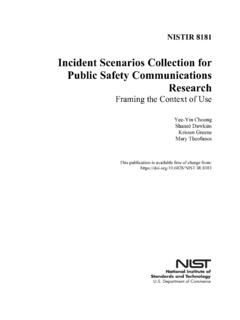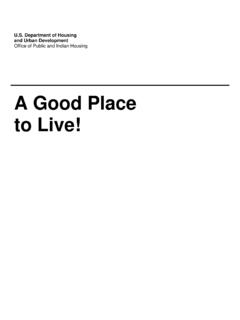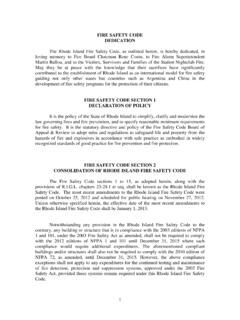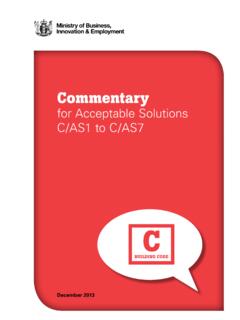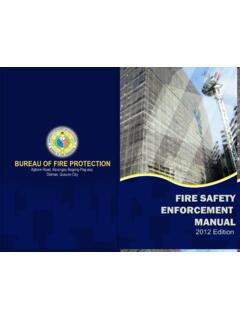Transcription of Ontario Building Code Part 9 Requirements for Fire Sepa ...
1 Structural Forensics Technical Note # 103 Page 1|9 Last updated December-20 1 888 624 3473 Consulting Forensic Engineers & fire Investigators Ontario Building Code Part 9 Requirements for fire Separation & Protection 1. Scope This technical note provides an overview of the main Requirements for fire separation and protection intended to delay the spread of fire and collapse of structural elements for houses and small buildings that fall under Part 9 of the Ontario Building Code (OBC). Part 9 buildings are defined as fewer than three storeys in height and smaller than 600 m2 in area. The details of the most commonly used fire separation assemblies that satisfy the minimum fire ratings Requirements of Part 9 of the OBC are presented.
2 The technical note does not address the Requirements for fire separation and protection for buildings that fall outside the scope of Part 9 of the OBC. While the difference between a fire separation and a firewall is explained, the structural Requirements for firewalls are not covered. 2. Objective This note was developed to more clearly explain the Requirements for fire separation and protection under Part 9 of the OBC. It is a useful tool to quickly determine compliance with the fire protection Requirements of the Building code. 3. Introduction to Building Code Requirements The National Building Code of Canada (NBC) is a model code that sets forth minimum Requirements for the design of buildings in Canada to ensure the safety and health of the public. The National Building Code is adopted and/or amended by each Canadian Province or Territory to be implemented and enforced in that jurisdiction.
3 In Ontario , the NBC is adopted and amended by the Ontario Building Code (OBC), the latest edition of which was published in 2012. The NBC design Requirements for fire protection of buildings were developed based on the lessons learned from single property fires and disastrous conflagrations in the 1900s that shed light on deficiencies in the design and construction of buildings and extensive use of combustible materials resulting in large loss of lives during fire incidents (CWC 1996). Among the major conflagrations that shaped the NBC are the 1927 Laurier Palace Theatre fire in Montreal (Montreal Gazette, 2019), the 1942 Cocoanut Grove Night Club fire in Boston (Moulton 1962), and the 1946 LaSalle Hotel fire in Chicago (Grossman, 2016).
4 Design deficiencies revealed by these major fire incidents included: - Poorly designed and insufficient egress facilities like exit stairs and doors; - Extensive use of combustible materials; - unprotected openings that led to rapid spread of fire ; and - Inefficient or non-existent alarm systems. One of the paramount objectives of the NBC and OBC is ensuring an acceptable level of safety to the public during a fire incident. fire -related public safety is greatly enhanced when occupants are immediately notified of the fire by an alarm system and are given enough time to safely escape the Building through visible and easily accessible exit corridors. The fire -related public safety Requirements Structural Forensics Technical Note # 103 Page 2|9 Last updated December-20 of the OBC is intended to reduce the probability that, as a result of the design or construction of a Building , a person in or near the Building will be exposed to a high risk of injury caused by: - A fire or the spread of a fire ; - The collapse of structural elements due to a fire ; - The failure of fire safety systems; and - Delayed or impeded exit from the Building to a safe place during a fire .
5 A Building must be protected from significant damage by fire , that is, a Building must remain standing long enough for occupants not to get injured by collapsing floors and walls while fleeing from the fire . Therefore, one of the main Building code Requirements is to reduce the probability that, as a result of its design or construction, a Building or adjacent buildings will be exposed to high risk of damage in a fire incident before occupants have had time to escape. This is achieved through mandating that critical Building components meet minimum fire ratings. 4. Understanding fire and Flame-Spread Ratings As discussed earlier, part of the fire safety objective of the OBC is to delay the spread of fire and collapse of structural members during a fire .
6 To achieve this objective, the 2012 edition of OBC adopts three types of rating as defined in Table 1: fire -Resistance Rating, fire -Protection Rating, and Flame-Spread Rating. If an element of a Building meets the minimum fire -resistance rating or fire -protection rating Requirements of the code, that element is described as a fire rated element. Of these three ratings, the fire -Resistance Rating is the most frequently referenced by Part 9 of the OBC. fire -Resistance Rating is the time in minutes or hours that a Building material or assembly can withstand passage of flame and heat during a standard fire under specific test conditions. For example, a wall constructed using 2x4 wood studs spaced 16 apart and covered with 5/8 thick Type X Gypsum board on each side of the studs has a fire resistance rating of hr.
7 Similarly, fire -Protection Rating is the time in minutes or hours that a closure of an opening, like a door or window, can withstand passage of flame and heat during a standard fire under specific test conditions. Flame-Spread Rating (FSR) is the ratio of the rate of spread of flames across a standard specimen of a particular material to that of red oak. For instance, if flames spread across a material as fast as they do across red oak, the material s FSR is 100. If flames spread across the material faster than they do across red oak, the material s FSR is proportionally larger than 100. Flame-Spread of a material is only useful when it is compared to other materials. The FSR of Building materials and assemblies is determined by testing in conformance with CAN/ULC-S102 (Standards Council of Canada, 2010).
8 To delay the onset of structural collapse, structural assemblies must satisfy minimum specified fire ratings. Furthermore, to delay the spread of fire from one major occupancy to another, fire rated assemblies are required for walls and floors that separate different classes of occupancy ( an office space adjacent to a warehouse), or different units/suites of the same occupancy ( two residential apartment units). 5. fire Ratings Requirements Buildings are classified in the OBC into groups based on their usage and occupancy. For example, houses fall under Group C: Residential Occupancy. Five major occupancies are covered under Part 9 of the OBC as described in Table 2. Structural Forensics Technical Note # 103 Page 3|9 Last updated December-20 Table 1: Different types of fire rating Rating Type Definition (reproduced from Article of the 2012 OBC) Conformance Reference fire -Resistance Rating The time in minutes or hours that a material or assembly of materials will withstand the passage of flame and transmission of heat when exposed to fire under specified conditions of test and performance criteria or as determined by extension or interpretation of information derived from that test and performance as prescribed in the OBC.
9 MMAH Supplementary Standard SB-2, MMAH Supplementary Standard SB-3, or ULC listings. fire -Protection Rating The time in minutes or hours that a closure will withstand the passage of flame when exposed to fire under specified conditions of test and performance criteria or as otherwise prescribed in the OBC. MMAH Supplementary Standard SB-2, MMAH Supplementary Standard SB-3, or ULC listings Flame-Spread Rating An index of classification indicating the extent of the spread of flame on the surface of a material or an assembly of materials, as determined in a standard fire test prescribed in the OBC. MMAH Supplementary Standard SB-2, or ULC listings MMAH: Ministry of Municipal Affairs and Housing ULC : Underwriters Laboratories of Canada Table 2.
10 Classes of major occupancy for buildings under Part 9 of the OBC Classification Major Occupancy Group C Residential Group D Business and Personal Services Group E Mercantile Group F-3 Low Hazard Industrial* (does not include garages serving individual dwelling units) Group F-2 Medium Hazard Industrial ** * Buildings or parts of buildings used for assembling, fabricating, manufacturing, processing, repairing or storing of goods and materials in which the fire load is less than 50 kg or 1200 MJ per m of floor area * * Buildings or parts of buildings used for assembling, fabricating, manufacturing, processing, repairing or storing of goods and materials in which the combustible content is greater than 50 kg or 1200 MJ per m of floor area, but do not involve sufficient quantities of highly combustible and flammable or explosive material to constitute a special fire hazard As discussed, loadbearing elements of a Building , including roofs, floors.
